-
CoE NOMATEN The Materials Characterization Group's lab
Helios 5 UX by ThermoFisher Scientific
A fully digital, Extreme High Resolution (XHR) Field Emission Scanning Electron Microscope (FE SEM) equipped with Focused Ion Beam (FIB) technology EDS (Energy Dispersive X-ray Spectroscopy) and EBSD (Electron Backscatter Diffraction). It allows for the fast characterization of nanometer details and analysis in 2D and 3D, elemental analysis (qualitative and quantitative), crystallographic analysis (including 2D and 3D), and best-in-class sample preparation and flexible nano-prototyping.
High-Resolution Field Emission Transmission Electron Microscope System JEOL JEM–F200 TF-HR
This ultrahigh-resolution electron microscope equipped with a double tilt holder for comprehensive sample observation, a straining holder for studying material deformation, a heating holder reaching temperatures up to 1100°C, and a tomography holder for three-dimensional imaging. The double tilt holder allows examination of samples from different angles, enabling a thorough understanding of their three-dimensional structure. This feature is particularly valuable for complex materials and biological specimens.
Bruker AXS (Advanced X-Ray Solutions) D8
Advance diffractometer is equipped with a sealed Cu X-Ray tube, LYNXEYE XE-T strip detector and TWIN-TWIN optics. The incident and scattered beam optics includes Göbel mirror at the tube and 0.2° Soller slits at the detector useful for parallel beam geometry as well as a set of motorised divergent slits at both sides suitable for working with divergent beam in Bragg-Brentano parafocusing geometry. The detector has energy resolution better than 380 eV at 8 keV (i.e. Cu radiation) what makes Kβ filter and secondary monochromators redundant, and specimen fluorescence an irrelevant phenomenon, while both Cu Kα and Kβ lines can be utilised in measurements. The diffractometer has also attachments for grazing incidence diffraction (GID) and an in-situ high-temperature (1200°C) measurement chamber connected to vacuum-gas system.
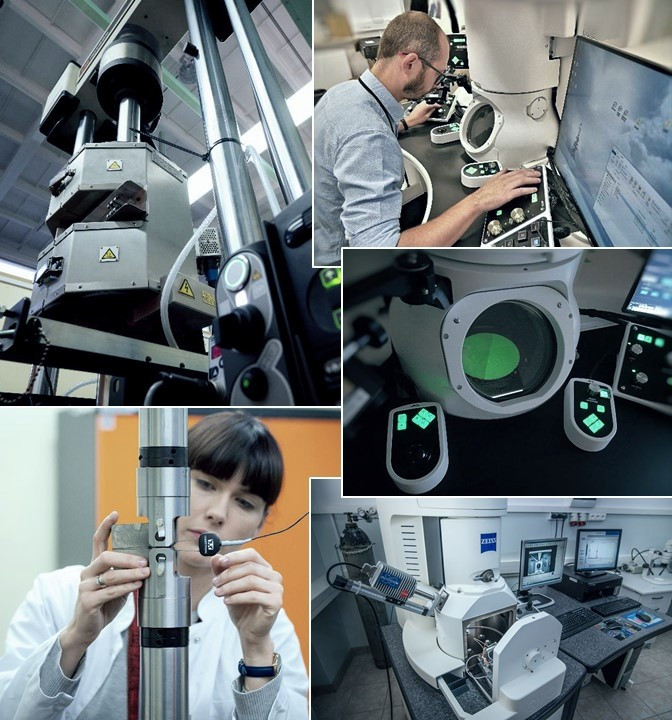
-
CERAD
Centre for Design and Synthesis of Molecularly Targeted Radiopharmaceuticals (CERAD) with its newly installed cyclotron Cyclone 30 XP. The device is one of the most advanced cyclotrons and one of three that can accelerate three different charged particles. The CERAD cyclotron designed and built by the Belgian company IBA (Ion Beam Applications S.A.) will accelerate protons and alpha particles to an energy of 30 MeV and deuterons to an energy of 15 MeV.
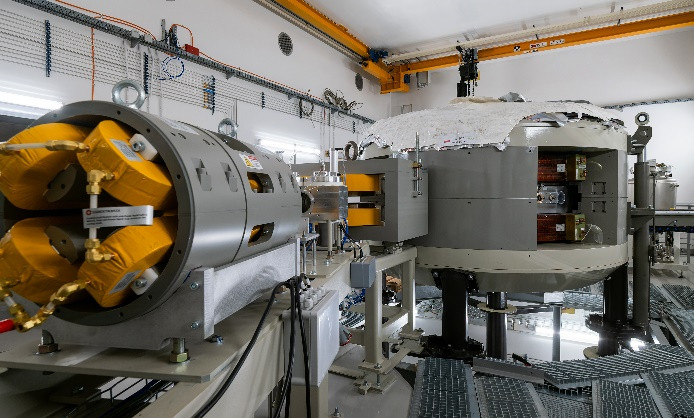
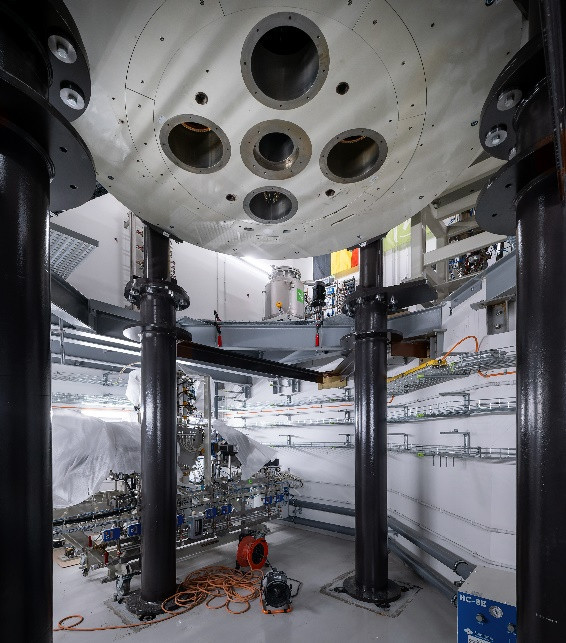
-
POLATOM
POLATOM is a Polish manufacturer and distributor of isotope preparations used in medicine, science, industry and environmental protection. The POLATOM centre conducts scientific research and development work using well-equipped laboratories, including laboratories for in vivo testing of marked preparations on animal models. The research is of an applied nature and covers areas such as radiopharmacy, chemistry, nuclear techniques, as well as scientific disciplines such as radiochemistry, biochemistry and immunology.
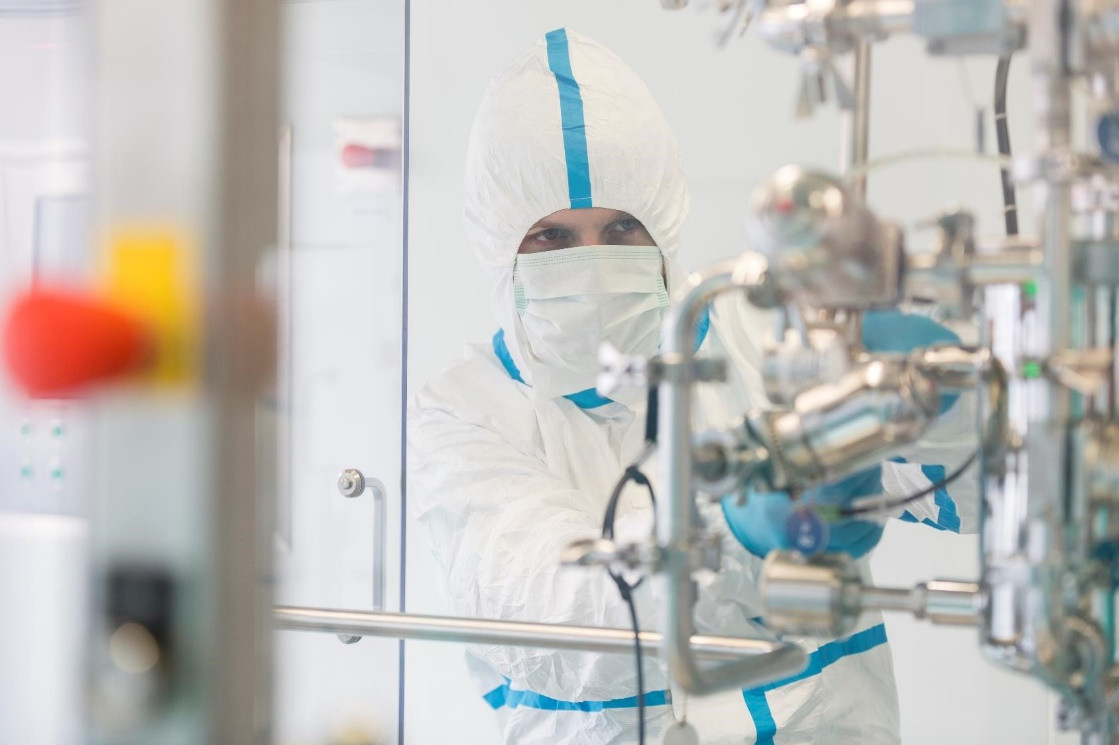
-
MARIA Reactor
The MARIA reactor is currently the only and unique research facility of this type in Poland and in the world, having a significant importance for public health, as a producer of radiopharmaceuticals, economy and science. It is a water and beryllium moderated high flux pool-type reactor with graphite reflector and pressurised channels containing concentric six-tube assemblies of fuel elements. Medical radioisotopes generated by the plant are a vital component in a range of medical research projects. Approximately 380.000 nuclear medicine procedures are conducted annually in Poland, highlighting the importance of the reactor’s continued operation and its role in public health and medicine. About 17 million people worldwide use products based on radioisotopes produced in the reactor, with MARIA covering about 12-15 % of the global supply of molybdenum-99.
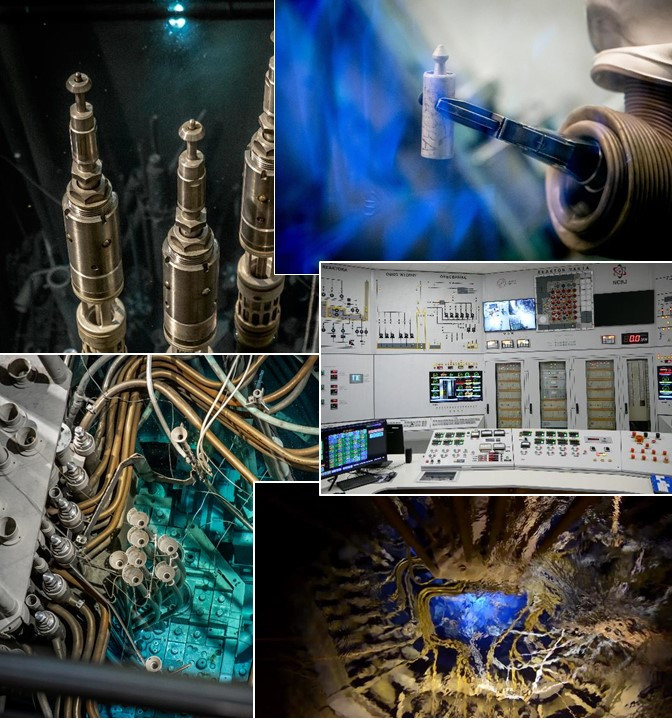
-
LBM
The Materials Research Lab (LBM) carries out scientific and diagnostic work on structural materials and their welded joints using destructive and non-destructive testing methods, including metallographic, mechanical and thermal testing. The LBM laboratory specialises in studying the effects of temperature, corrosive environment and radiation, which affect the strength of materials, reducing the so-called „lifetime” of structural components. LBM includes the Laboratory for Structural, Corrosion and Chemical Testing, the Laboratory of Mechanical Testing, the Laboratory of Non-Destructive Testing and the Work of Hot Chambers consisting of a set of 12 lead chambers with a maximum shielding of 100 Ci (3.7 × 1012 Bq), equipped with appropriate technological installations and connected to each other by a transport tunnel.

